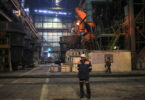Nikolay Petrov
We live and will live for some time in an era of changes. It began in January 2020 with a constitutional reform that launched the transformation of the Russian political regime. One single logic is not enough to explain the changes that have taken place since then. There is a longer – proactive, proactive – and shorter – reactive – logic of political development. Actions related to the coronavirus, Navalny’s poisoning, Khabarovsk and Belarusian protests are shorter. The repression against the elite and civil society is longer. The same is true for the media, although in the latter case there is also an element of reactivity.
The current elections to the State Duma are an important episode in this political transformation. Reduced to a formal procedure and almost imperceptible, they still distinguished themselves by powerful pressure even on the systemic opposition and the use of the most unassuming methods – from distributing money to double-spoilers. And even the debate over whether United Russia will retain its constitutional majority in the next Duma does not seem significant, because United Russia does not exist as a real, let alone a consolidated subject of politics. There is a motley group of deputies affiliated with different elite groups: Kiriyenko and Volodin, departments and corporations, regions. The Kremlin can work with all of them in any scenario, but the general nature of this work and its results from the point of view of the balance of interests of various elite groups may be different.
Nevertheless, for all their demonstrative empty content, these elections play an important milestone role. If the outgoing Duma provided the Kremlin with legislative formalization of the transformation, then the Duma of the renewed composition (and, according to estimates, the composition of the ruling party can be renewed by almost half, other Duma parties – by a quarter) will be the only authority whose powers go far beyond the key year for the system of 2024 … In other words, the Duma acquires the role of a political guarantor of transit, whatever that means in our conditions.
At the new stage of political transformation, turbulence will only increase. The purges in civil society and the media are moving forward rather than backward. After the elections, everything will not calm down, but, on the contrary, the most important thing will begin. In some ways, this process will resemble the events of 2012 – only then did the authorities “build” society and sharply strengthened control over the elites in order to prevent the confluence of protesting citizens and some elite groups, and now, on the eve of discontent in the elite, the authorities sterilize information and civil space.
The transfer of power from Putin – the everyday president to Putin – to the portrait on TV has already partly taken place. And the new format of the president’s sporadic presence in public political life is not so much the result of a pandemic as a deliberate distance from the routine tasks of management and representation. The further, the more Putin will be played by numerous deputies, priests and interpreters.
The fact that there will be many deputies, in each area has its own, plus also territorial governors like Trutnev, on the one hand, reduces the danger for the president of the appearance of too influential figures, and on the other hand, dooms the system to marking time.
Putin remains the president, but the further, the more distant, and he will not have a chief and even more so one deputy, and by definition cannot. Instead, there will be a seven-headed eagle and an autopilot mode, which assumes that the desired course is set, you just need to maintain it.
Under such conditions, it becomes a nontrivial task to coordinate the actions of all seven heads: the government of the president and the government of the prime minister, the presidential administration, the Security Council, the State Council, the Kozak Commission, VEB as a mega-institute for development. This is not counting large corporations with direct access to the president. All the forces of the regime, aging along with its leader, will be spent on maintaining the status quo, and not on making a breakthrough, no matter in which direction. The system as a whole and its individual blocks will strive to simplify the tasks they solve, to reduce them to standard ones, to fight not for the future, but for the preservation of the present.
Already, there is an imbalance in the work of different heads. Those of them who have their own resources (and they have the government, VEB, corporations), can regroup and solve the tasks assigned to them quickly. Others – for example, the Kozak Commission on International Development Assistance, whose creation decree was signed last November – remain on paper.
A striking example of such uneven development is the unimaginably rapid deployment of the SDG system (sustainable development goals) in all regions of the country, carried out by the government under the auspices of the presidential administration in 2020. In less than a year, a powerful centralized system was created for collecting information on issues of concern to citizens in social networks, its operational analysis and quick response. This system has already been used in the Duma elections, and should reach its full design capacity by 2024.
After September 2021, the most difficult thing in terms of internal conflict lies ahead – to launch and debug a fundamentally new management design, to carry out massive personnel changes-appointments: in the political block (speakers, party leaders), in the judicial (heads of the highest courts), in the power (SB, FSB, Ministry of Internal Affairs, TFR), in corporate blocks (Gazprom, Rostec). So far, since 2016, the governor’s corps and the mechanism of its work have been radically updated, the security forces have been half updated. Generally speaking, there will be a replacement-reshuffling of the entire top management stratum.
One of the first steps that can be expected immediately after the elections is the reconstruction of the entire party-political bloc with the replacement of both speakers and party leaders, as well as the reconfiguration of the party-political design. This is ripe, and only the priority given to the solution of tactical tasks, as well as the need to first determine the general contours of the transformable system, led to the fact that by the elections of 2021 the party plane flew on parole and on one wing.
Everything would be fine with the prospects for further transformation of our political regime, but there are three serious problems. The first is the inability of the system to carry out serious large-scale reforms that require the coordinated action of its various parts. A vivid illustration of this is the so-called 2018 pension reform.
The second problem is the utopian and counterproductive end result. The governing system of a huge country, on the one hand, seems to be decentralized, and on the other hand, it is turning into a “big president” – a huge ramified structure where deputies and presidential representatives in different directions work in a semi-autonomous mode, providing the functions of current management. Finally, the third one is associated with new challenges, both external and internal, which will arise in front of the system the further, the more – due to the growth of general turbulence, accumulated distortions and material fatigue.
Courtesy: (Carnegie)






